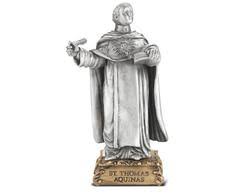St. Argeus – Patron Saint of Scholars and Seekers of Knowledge
When he lived:
St. Argeus, the enigmatic figure of history, lived during the fascinating period of the 5th century AD.
Where he lived:
St. Argeus hailed from the captivating ancient city of Alexandria, Egypt. The city, known for its rich history, diverse culture, and renowned scholars, provided a vibrant backdrop for the life of this mysterious saint.
Notable world events during the time of his life:
- The Fall of the Roman Empire (476 AD): The 5th century witnessed the final collapse of the Western Roman Empire, an event that reshaped the course of history. Barbarian invasions, political unrest, and internal conflicts culminated in the deposition of the last Roman emperor, Romulus Augustulus, marking the end of an era.
- The Great Fire of Constantinople (532 AD): The splendid and mighty city of Constantinople, the capital of the Eastern Roman (Byzantine) Empire, faced a catastrophic disaster when a massive fire engulfed the city. This event was a turning point in the reign of Emperor Justinian I and led to the reconstruction of the city, giving rise to new architectural wonders like the Hagia Sophia.
- The Council of Ephesus (431 AD): A significant event in the early Christian Church, the Council of Ephesus, convened in 431 AD, addressed theological controversies, including the Nestorian heresy. This council affirmed the Virgin Mary’s title as the “Theotokos” (God-bearer) and solidified the importance of her role in Christian theology.
- The Huns and the Fall of Attila (453 AD): The formidable Hunnic Empire, led by the infamous Attila the Hun, posed a constant threat to the Roman and Byzantine Empires. The death of Attila in 453 AD brought an end to the invasions, but the aftermath reshaped the geopolitical landscape of Europe.
- The Birth of the Gupta Empire (320-550 AD): In the Indian subcontinent, the Gupta Dynasty rose to prominence, marking a “Golden Age” of cultural, scientific, and economic achievements. During this time, advancements in mathematics, astronomy, and art flourished, making the Gupta period a significant chapter in human history.
His patronage:
St. Argeus, the patron saint of scholars and seekers of knowledge, is believed to offer guidance and inspiration to those who pursue wisdom and understanding. Whether it be scholars seeking insights in the ancient city of Alexandria or curious minds exploring the world during the dynamic 5th century, St. Argeus’ patronage remains a beacon of hope for those on a quest for enlightenment. Students, academics, and anyone thirsting for knowledge can find solace and support in this enigmatic figure from the past. Embracing the spirit of St. Argeus, we are reminded to be curious, to explore, and to seek answers to the mysteries that surround us. As history continues to unfold, the legacy of St. Argeus lives on, inspiring generations to unlock the secrets of the world and to unravel the complexities of existence.

Detailed information about Saint Argeus is unavailable. Saint Argeus is defined by church traditions with little or no proof of originality.
Saint Argeus was said to have been a Christian martyr. Tradition never tells his story alone. It always chooses to involve his brothers, Narcissus and Marcellinus.
There are no records of what Argeus did in his early life. There is also no record of when he was born or who his parents were.
Traditions allow us to easily tell stories about who this man is. Most times, these traditions vary so entirely that it is impossible to tell which story is real.
One tradition states that Saint Argeus didn’t choose to join the army. He and his brothers Narcissus and Marcellinus were enlisted in the army during the time of Licinius.
Refusing to serve Licinius in the army due to their faith, they were arrested and taken to a hearing. Found guilty, they were then subjected to death.
A different tradition claims that Saint Argeus and his brothers were soldiers under Emperor Licinius. Licinius had made it a rule for all his men to carry sacrifices to the pagan gods he served.
Being devout Christians, Saint Argeus and his brothers refused. This annoyed Emperor Licinius so much that he commanded that all three men be put to death.
Saint Argeus was beheaded in 320 A.D. He was killed at Tomi, Exinius Pontus, and Moesia.
He is said to be commemorated by the Catholic Church on January 2.

